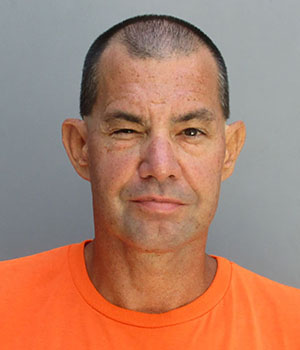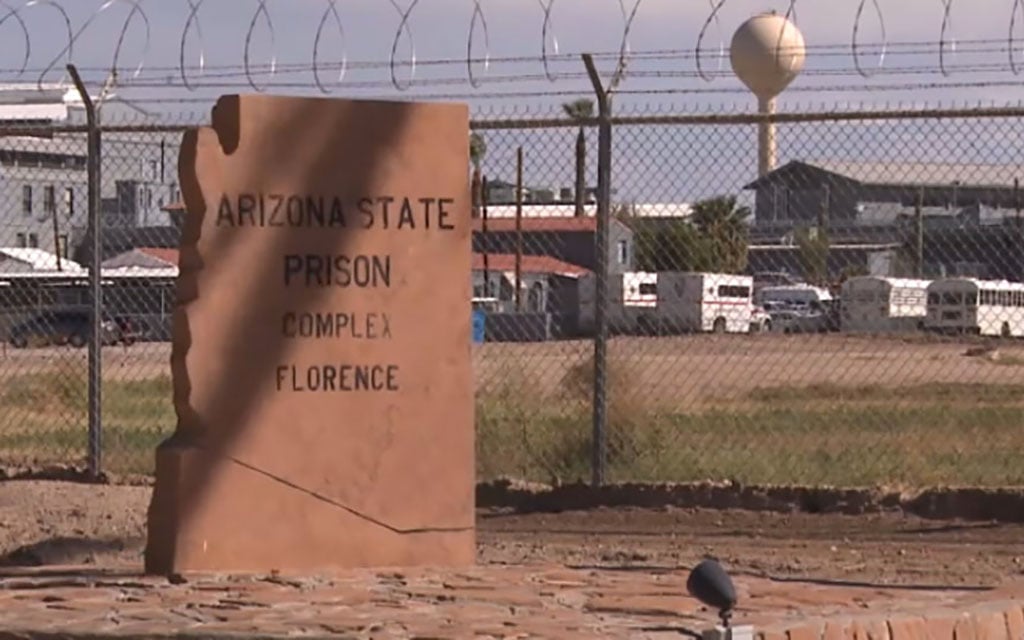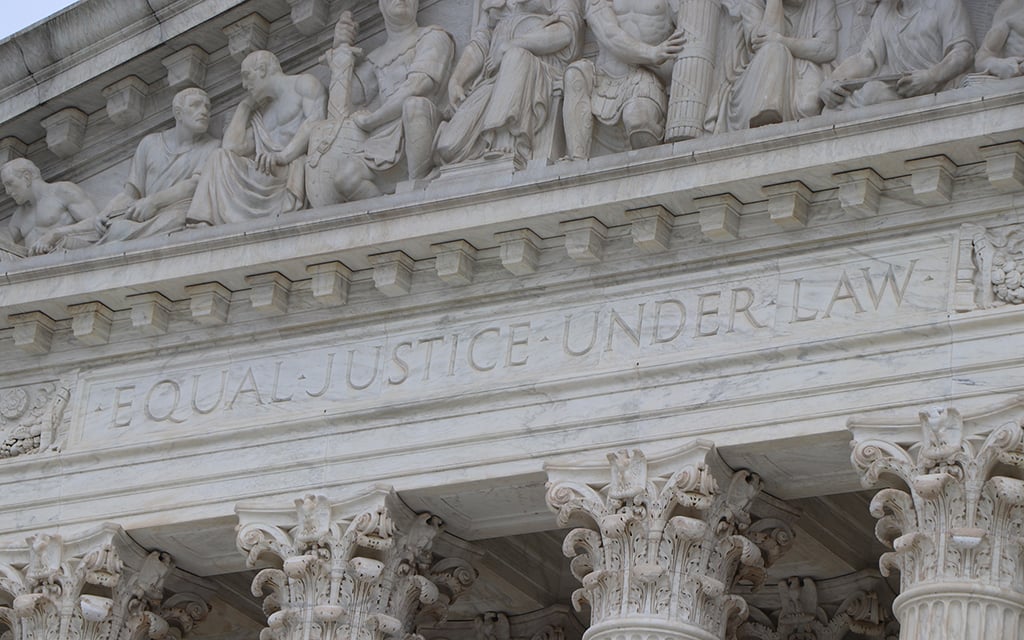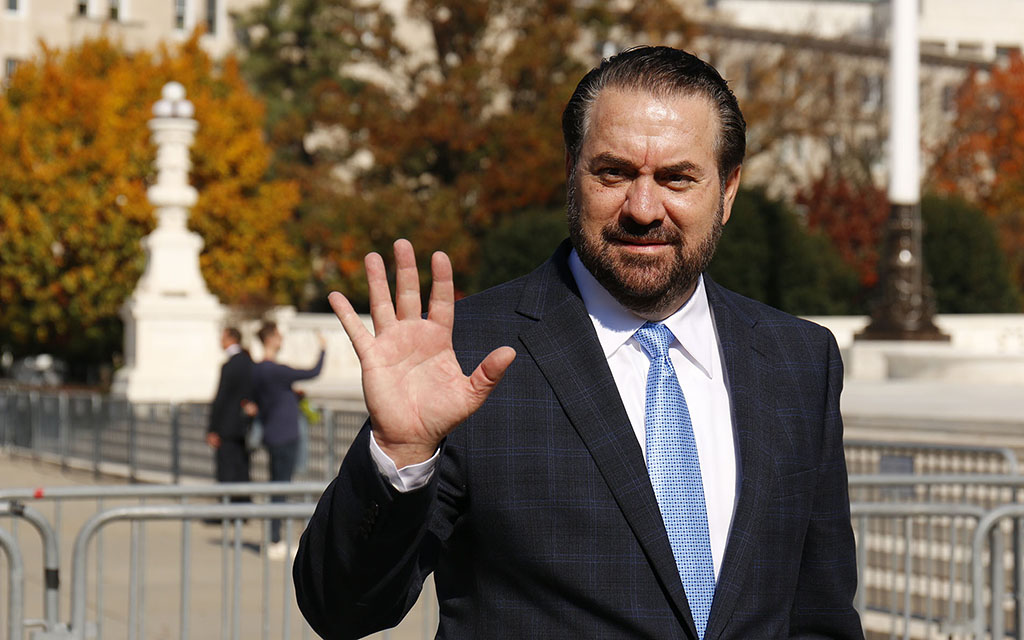WASHINGTON – With just three weeks until convicted murderer Aaron Gunches is scheduled to be put to death, a court battle continues to rage over whether the state will be ready to execute him by lethal injection on April 6.
Gov. Katie Hobbs said in filings with the Arizona Supreme Court Wednesday that she is not refusing to comply with the court’s March 2 warrant of execution for Gunches – just that the state is in “no position” to do so by the specified date.
The state’s filings said the Department of Corrections, Rehabilitation and Reentry does not have procedures in place or trained staff to conduct an execution, and that the chemicals it has may no longer be effective.
“This matter is not whether Gunches was convicted of and sentenced to death for a heinous crime or whether the victims of that crime deserve justice. He was, and they do,” the state’s filing said.
“The Governor and Director are committed to fulfilling their duties under the Constitution and laws of Arizona, but do not believe they can presently carry out an execution consistent with those duties,” the state said.
The state was responding to death penalty advocates – including the Maricopa County Attorney’s Office, legislative leaders, the sister of Gunches’ victim and even Gunches himself – who argued this month that Hobbs does not have any leeway in the matter. Karen Price, the victim’s sister, argued that Hobbs’ refusal to carry out the warrant is a “total disregard for the law” that “cannot stand and must be remedied.”
“Defiance of a lawful order of this Court is a legal matter of statewide importance, whether the action is willful or made out of ignorance,” Price’s filing with the Supreme Court said. “Such conduct directly undermines the rule of law and is contrary to Governor Hobbs’ solemn duty to support the laws of Arizona and faithfully and impartially discharge her duties.”
They are the latest legal twists in a case that began in November when Gunches, who has waived most of his appeals, urged the Arizona Supreme Court to issue a warrant for his execution. Then-Attorney General Mark Brnovich, who had successfully petitioned for three executions last year after an eight-year hiatus in Arizona, took up the case and asked for the court to set Gunches’ execution.
Gunches tried to withdraw his request in January, citing a history of problems with lethal injection in Arizona and the elections of Hobbs and Attorney General Kris Mayes, both of whom have expressed skepticism over the state’s handling of executions. Mayes asked to withdraw the state’s warrant request on Jan. 20, the same day Hobbs appointed a commissioner to review the state’s death penalty protocols.
The Supreme Court issued the warrant anyway on March 2. But Hobbs said a day later that the warrant did not mandate an execution but authorized it, and she said Gunches would not be put to death until the state could reevaluate its death penalty procedures.
That argument carried little weight with Price and Maricopa County Attorney Rachel Mitchell, who filed a brief Monday that she said “recognizes and supports the right of victims to a ‘prompt and final conclusion of the case.'”

Aaron Brian Gunches pleaded guilty for the murder of Ted Price and has repeatedly waived his appeals. Last fall, he asked the Arizona Supreme Court to issue his death warrant. (Photo courtesy Arizona Department of Corrections, Rehabilitation and Reentry)
“The Constitution provides that the Governor shall faithfully execute the laws of Arizona,” Mitchell’s brief said. “Nothing in the Constitution or laws of Arizona or the Warrant gives the Governor discretion to ignore the Warrant and grant what essentially constitutes a temporary reprieve from the death penalty.”
Gunches was convicted in 2008 of the execution-style murder of Ted Price, the ex-husband of his girlfriend at the time. Price was shot three times in the chest and one time in the back of the head on the Salt River reservation.
A month later, Gunches was pulled over near the California border by an Arizona Department of Public Safety officer, who Gunches shot twice before fleeing. The officer survived and bullets from the scene linked Gunches to Price’s murder.
After asking to be executed, then trying to withdraw that request, Gunches reversed himself again last week, going so far as to ask in court documents to be transferred to Texas, where “the law is still followed and inmates can still get their sentences carried out.”
“The laws of Arizona have been ignored and the justice system is broken, at least in Arizona,” Gunches wrote, citing his own case where he pleaded guilty, “refused a life sentence, waived all appeals and ‘volunteered’ to have his DP (death penalty) sentence carried out, yet, he has been denied.”
The Supreme Court rejected the Texas transfer request on Monday.
Dale Baich, a professor at Arizona State University’s Sandra Day O’Connor College of Law who worked as a federal public defender, said the next question for the court is whether it can issue the writ of mandamus requested by Price, Mitchell and lawmakers.
A mandamus action orders government officials to properly fulfill their duties – a move that Hobbs and Mayes said is “rare and highly discretionary” and would be “unprecedented, contrary to the law, and contrary to the public interest” in Gunches’ case.
Richard Dieter, executive director of the Death Penalty Information Center, said that while the governor is subject to court orders, the law ultimately puts the exercise of capital executions in the hands of the executive branch.
“You do have the courts interpreting what is constitutional, but what you rarely have (is) one branch telling the other branch what their duties are,” Dieter said. “It’s hard to know what will happen but generally, the governor is responsible to the people, the governor is elected by the people.”
More court filings are expected Thursday from Gunches, Price and others. Thursday is also the deadline for the public to submit comments to the Arizona Board of Executive Clemency, which has set a March 23 hearing to consider whether Gunches should be granted a reprieve. In Arizona, while the governor has the final say, she cannot grant clemency without a recommendation from the board.
Even as the court wrangling goes on, Baich said the order of execution will likely stay in place.
Dieter said the back-and-forth about the authority of the governor versus the courts is an example of “democracy … in full practice,” with each branch working to balance the other.
“You have to figure out what the law is, who has the authorities and then try to come to (a) resolution,” he said.



